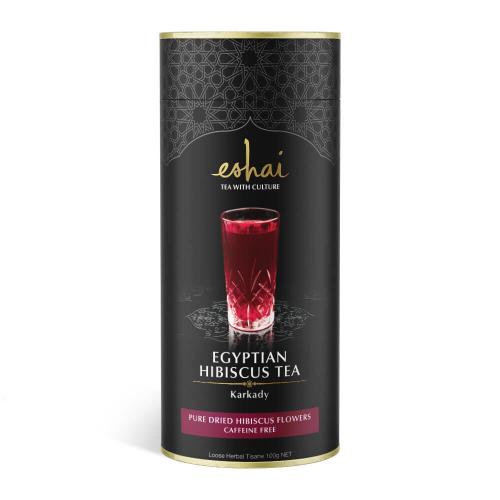What’s In The Packet?
vegan. gluten free. 100% natural. organic.
no preservatives or additives. hand-packaged
Experience
Best Enjoyed
Iced, with your favourite sweetener melted into the infusion while it’s still hot. If you’re after some cuddly warmth from your reviving yet nurturing tea, keeping it hot works too. If you’re a fan of strong, tart flavours, you can enjoy Karkady straight. However, tradition calls for sugar (or your favourite alternative sweetener) to highlight the natural berry-like flavour of the flower and complement its tart taste.
Best Served
Karkady is best served chilled in a tall glass full to the brim with ice. Mason jars are also handy for those who want a big dose of refreshment with the option to pop a lid on it and store it in the fridge for later. You can also honour tradition by making a large pitcher to keep in the fridge, ready to serve (and impress) guests. A decorative tea tray is the best way to present Karkady, but if you want to keep things simple, your favourite teacups or mugs will do the trick.
Pairs With
Its own sweet self. This magical flower has a berry-like tang that fills you with the desire to take in the delicately changing notes of its flavour without distraction. Karkady can also be a delightful companion to any meal, and it is ideal for those looking to replace chemical-laden soft drinks with a healthy but delectable alternative.
Tea Time
For Egyptians, tea time is anytime the need for refreshment arises. So, if you’re in the mood for a sweet, tart treat, then it’s officially Karkady time! Free from caffeine, this rejuvenating drink can be your faithful companion, day or night.
Caffeine Level
None
Brewing Guide
AMOUNT
1 heaped tsp per cup
TEMP
100°C (210°F)
TIME
3 – 5 min
Add 1 cup of water to a saucepan. Add 1 heaped tsp of tea. Cover and bring to a rolling boil. Simmer on low heat for 3 – 5 min. Remove from heat. Sweeten to taste. Allow to cool. Strain into cup. Serve chilled over ice. Also delicious served hot.
Brew it the traditional Egyptian way
Try the time-honoured tradition of a thirst-quenching iced tea. Add 1 L of freshly drawn ambient water to a saucepan. Flash rinse 2 – 3 tbsp of tea with hot water and add to the saucepan. Cover and bring to a rolling boil. If sweetening, add the sugar at this point to ensure it dissolves and enhances the natural flavour of the tea. Egyptians love their tea really sweet! Simmer covered on low heat for 3 – 5 min. Remove from heat. Allow to cool. Ensure the leaves remain in the pot while cooling to maximise flavour. Strain into a glass jug or tea pitcher. For an aromatic and romantic twist, try a few drops of rosewater. Best served chilled in a tall glass full to the brim with ice. Keep a pitcher in the fridge and impress guests by serving on a decorative tea tray.
















